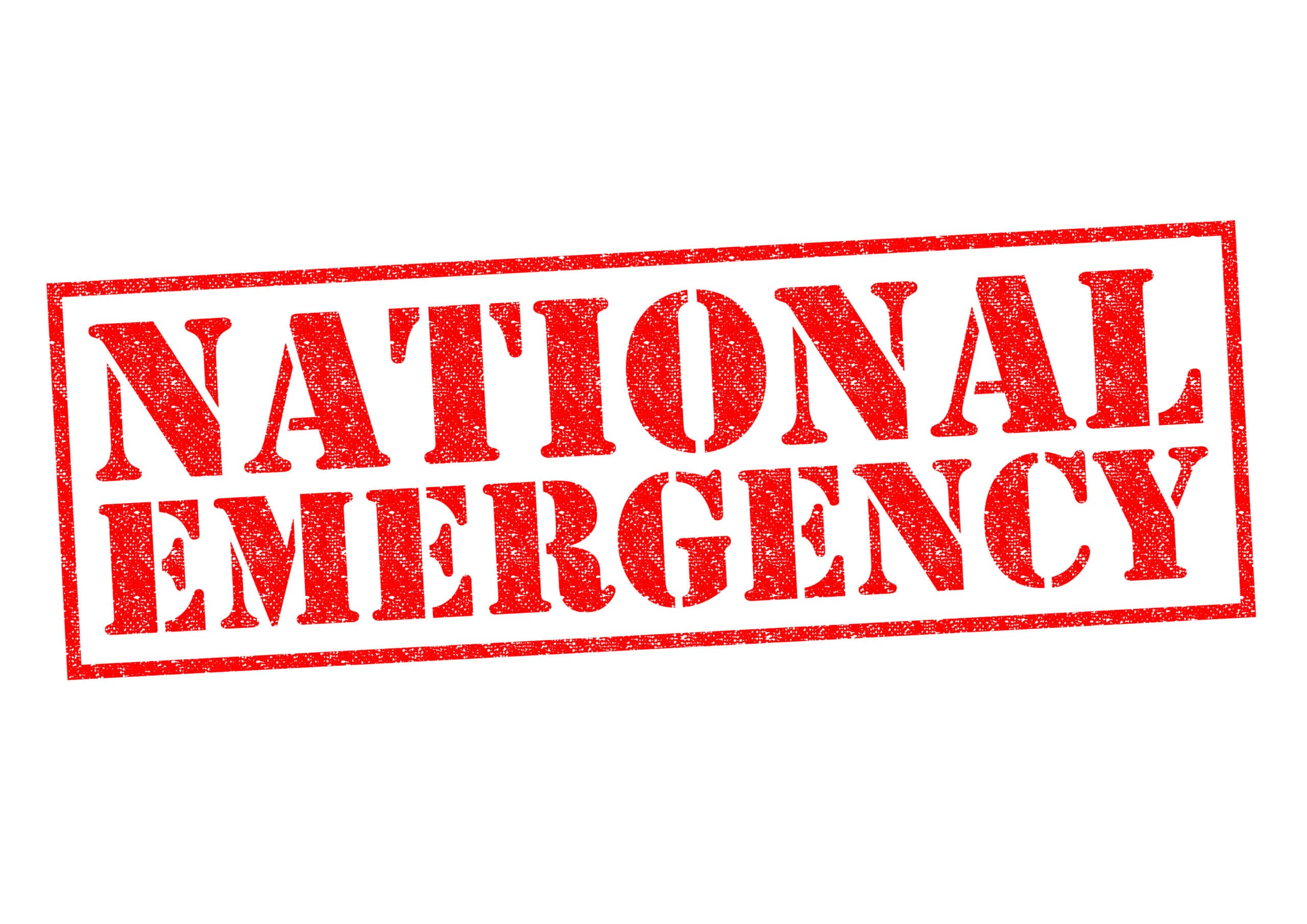What is a national emergency – The Constitution of India provides for three types of emergencies namely – national emergency, state emergency and financial emergency. The national emergency is mentioned under Article 352. The national emergency in India is proclaimed by the President of India on grounds of war, external aggression or armed rebellion. The President proclaims the national emergency if the written recommendation is given by the cabinet in the leadership of Prime minister. The national emergency in India changes the political structure of the country or a part of it from federal to a unitary system. For the citizens, the national emergency would suspend some of the fundamental rights mentioned under Part-III of the constitution.
The proclamation of a national emergency in India is an unprecedented measure and has far-reaching impact. The provisions of national emergency give extensive powers to the central government which if misused may undermine the democratic values. The provisions related to national emergency have been amended by the 42nd Constitutional Amendment Act and the 44th Constitutional Amendment Act.
Types of national emergency in India – Internal and external emergency
A national emergency declared on grounds of war or external aggression is called an external emergency. However, the national emergency on grounds of armed rebellion is called an internal emergency.
It should be noted that the proclamation of national emergency may be applicable to the entire nation or only a specific part of it. For example, if the war or armed rebellion is limited to a particular region, the President may proclaim national emergency only for that state or region and leave the other state out of it.
Internal disturbance is not a ground of national emergency
Originally, the Constitution mentioned “internal disturbance” as one of the grounds of national emergency. However, the 44th Amendment Act of 1978 replaced the term with “Armed Rebellion”. Before this, the Congress government led by Indira Gandhi declared an emergency on grounds of internal disturbance.
Why was the word “Internal disturbance” replaced?
The national emergency, from 1975-1977, is considered the dark phase of Indian democracy. It was declared on grounds of “internal disturbance” which is a vague term and could be politically motivated. After the general elections of 1977, the Janta government tried to dismantle the authoritarian features of the state. The replacement of the word “internal disturbance” with “armed rebellion” was an attempt to bring clarity and restrict the union government from becoming authoritarian without any constructive reasons.
National emergency in India – Procedure for proclamation
The president can proclaim the national emergency on valid grounds only if a written recommendation is given by the cabinet. Note that the national emergency cannot be proclaimed only on the advice of the Prime Minister. The concurrence of the cabinet is mandatory.
The national emergency must be approved by both the Houses of Parliament within one month from the date of proclamation.
If the national emergency is proclaimed at a time when the Loksabha has been dissolved, then the proclamation remains active until 30 days from the first sitting of the Lok Sabha after it meets again. However, in the meantime, the Rajya Sabha must approve it.
National emergency – Duration
The emergency continues for a period of 6 months at a time. However, it can be extended to an indefinite period with the approval of the Parliament every six months.
The periodical parliamentary approval was added by the 44th Amendment Act of 1978.
Type of Parliamentary approval
The 44th Amendment Act introduced the special majority for the approval of the national emergency. The resolution approving the proclamation or continuance of national emergency must be passed by either House of Parliament by a special majority as given below.
- A majority of the total membership of the House
- A majority of not less than two-thirds of the members of that house present and voting
Before the 44th Amendment Act 1978, the national emergency could be approved by a simple majority.
How is national emergency revoked?
The President of India can revoke the national emergency in two ways.
- By proclaiming the revocation of national emergency. Parliamentary approval is not required for such a proclamation.
- If the Lok Sabha passes a resolution with a simple majority, disapproving the national emergency. This feature was also added by the 44th Amendment Act.
What happens in a national emergency
The proclamation of national emergency directly affects governance. It affects the federal structure at political scenarios whereas, at the individual level, the national emergency may affect some of the fundamental rights of the citizens.
Effects of national emergency on the federal structure
During a national emergency, the federal structure is changed into a unitary one without a Constitutional Amendment. The union becomes all-powerful and can exercise its control over the state governments. The state governments are brought under the control of the centre without suspending them.
Executive control during a national emergency in India
Generally, the center may issue executive directions to the state government only in some specified matters. However, during a national emergency, the union executive becomes entitled to give directions to a state on any matter.
Parliament during a national emergency
During a national emergency, the Parliament can make laws on any subject mentioned in the state list. Even though the state assembly is not suspended but, the laws made by the Parliament will have overriding power. In technical terms, the national emergency suspends the distribution of powers between the state and center.
The laws made by the Parliament during a national emergency remain operative until the six months after the end of the emergency. The Parliament is also empowered to confer the powers upon the center or the central agencies to work in the matters outside the union list.
During a national emergency, the President is also empowered to issue ordinances in matters listed in the state subjects if the Parliament is not in session.
Impact of national emergency on financial controls
During a national emergency, the President can change the constitutional distribution of revenues between center and states. The President can even cancel the transfer of the finances from the center to the state. The modifications in the distribution of revenues continue until the end of the financial year. Also, any such order has to be laid before the Parliament.
Lok Sabha during a national emergency
While the national emergency is in operation, the life of Lok Sabha can be increased for one year at a time (by a law of Parliament for any length of time). However, once the national emergency is revoked, the extension given to Lok Sabha cannot continue beyond six months
The Parliament may also give an extension to the state assembly beyond five years (normal term) by one year at a time for any length of time. The maximum period for such extension is till six months after the end of the national emergency.
Impact on fundamental rights
The effect of national emergency on fundamental rights is mentioned under Articles 359 and 359. These articles have been amended by the amendment Act of 1978. The effects of national emergency on fundamental rights are explained below.
| Article 358 | Automatically suspends Article 19 only on grounds of war or external aggression |
| Article 359 | Suspends the “right to move to the courts” for the enforcement of the fundamental rights that are suspended by the President’s order. The effects mentioned in this article are applicable for all three grounds of national emergency. |
To apply Article 359, the President has to make a further order specifying those fundamental rights which will remain suspended during the national emergency. Also, the rights mentioned under the basic structure of the constitution cannot be suspended during the emergency.
The 44th amendment act restricted the scope of Article 358. The article cannot suspend the rights mentioned in Article 19 on grounds of an armed rebellion.
National emergency declaration so far
So far, the national emergency has been declared three times. The first national emergency in India was declared in October 1962 during Chinese aggression in present-day Arunachal Pradesh. It was extended further during the Indo-Pak war of 1965 and remained in operation till January 1968.
The second national emergency was declared again on grounds of war. It was declared in December 1971 at the time of Indo-Pak war of 1971. The second national emergency along with the third national emergency was revoked only in March 1977.
The third national emergency which is the most controversial proclamation was invoked in June 1975. The third national emergency was declared on grounds of “internal disturbances”. It drew widespread criticism for undermining the Indian democracy and misusing the powers given in the Constitution. Later the word internal disturbances was replaced with armed rebellion in an attempt to prevent further misuse of the provision.



